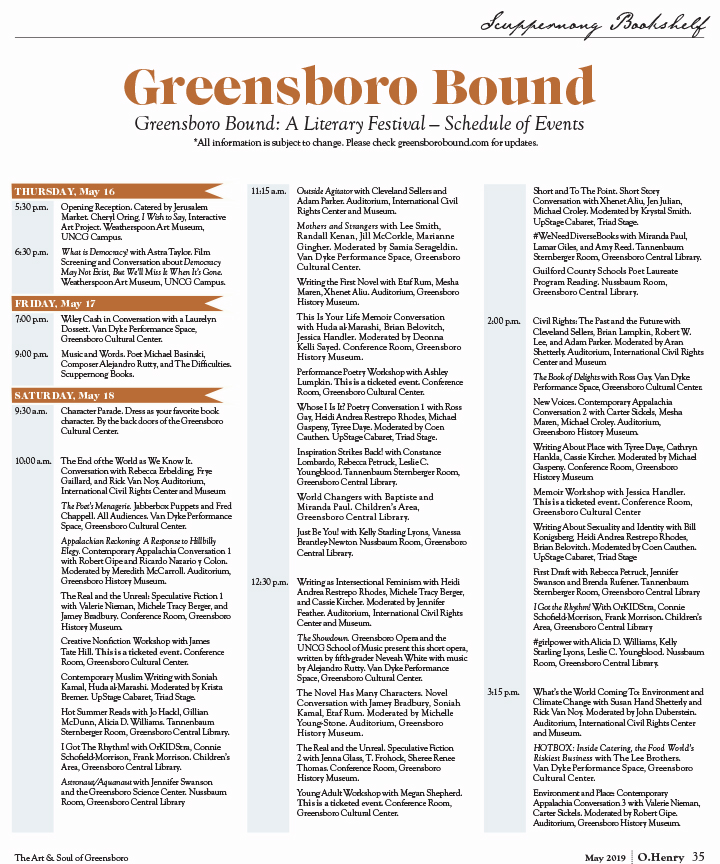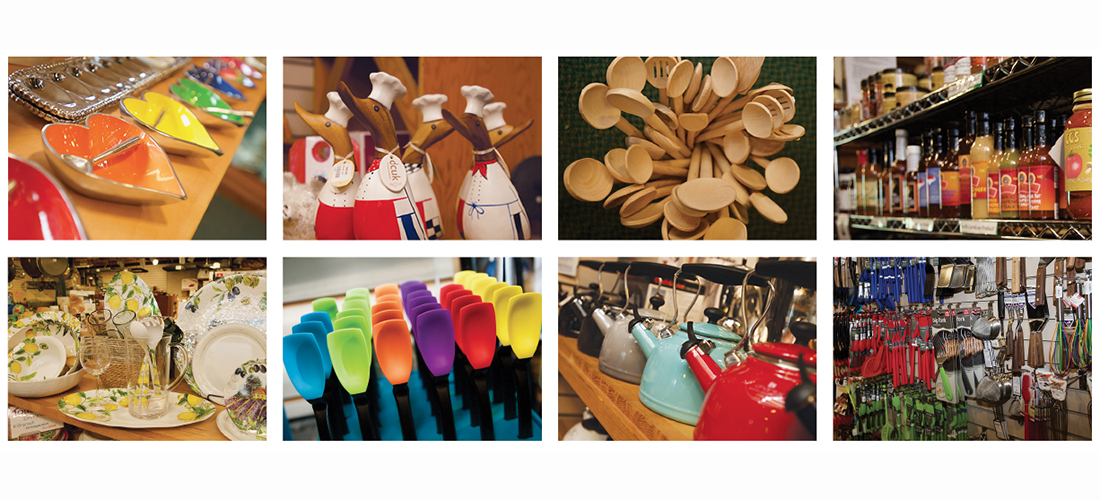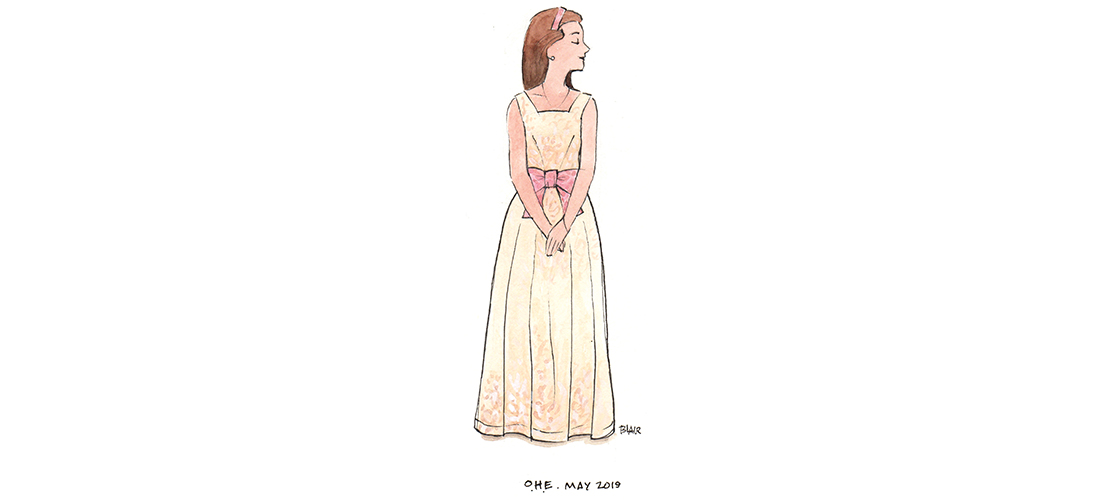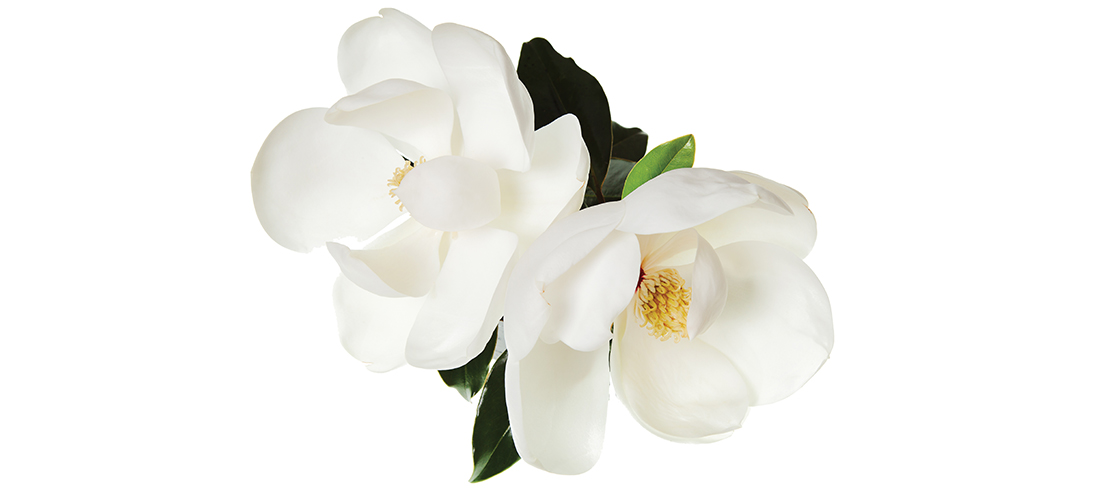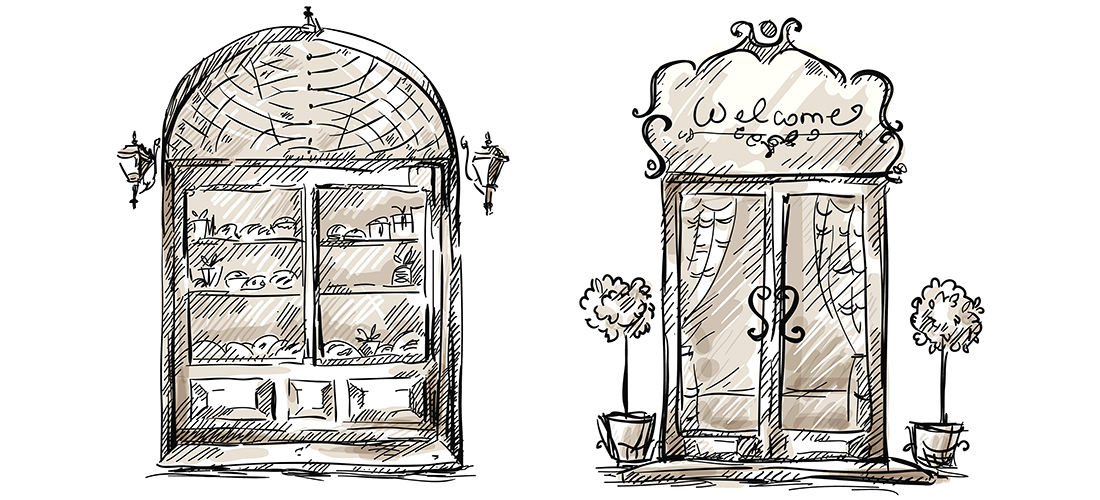Simple Life
Dirty Hands, Happy Heart
And other gifts from the universe
By Jim Dodson
When all else fails, Mulligan the dog and I head for the garden.
Possibly because I hail from a family of Carolina farmers and rabbit tobacco preachers, digging in the dirt is not only second nature and something that draws me closer to my maker, but also serves as a cheap and effective therapy in a world that seems increasingly shaped by the insatiable gods of work and money.
For many Americans, work has become something of its own secular religion. According to Gallup, Americans average more hours of work per year than any of our fellow developed nations, yet 87 percent of U.S employees don’t feel fulfilled by how they earn their living. That’s a staggering problem that helps contribute to rising depression and addiction across all sectors of society.
In 1919, as Fast Company recently noted, 4 million Americans went on strike to demand fairer wages and a five-day work week — the beginning, historians point out, of the so-called American leisure class. As a result, weekends became enshrined in the culture. The bad news? We’re losing ground to our obsession to work longer and harder with diminishing returns, the average American working a full day longer than the 40-hour work week fought for by our early 20th century ancestors.
Maybe you’re one of the fortunate ones who loves what you do. I certainly am, having enjoyed a varied journalism career and book-writing life that has taken me to places I only dreamed about as a kid. Today, I own the privilege of serving as editor of four robust arts-and-culture magazines staffed by a talented crew of folks across this state. We’re a merry band of storytellers and artists who love what we do and never take that gift from the gods for granted. How we spend our time away from the job says a lot about us, a lesson some of us had to learn the hard way.
At age 30, in 1983, I was the senior writer for the largest news magazine in the South, the Sunday Magazine of the Atlanta Journal-Constitution, a magazine where Margaret Mitchell once worked and the South’s finest writers appeared. Over my seven years in Atlanta, covering everything from Klan rallies to presidential candidacies, I took only two or three full weeks of vacation. When I finally received the summons to Washington, D.C., for the interview I’d grown up hoping for, I felt utterly empty, burned-out, ready to find a new way of earning my daily crust.
The unexpected epiphany came following my big interview in Washington when I phoned my father from the outer office of Vice President George H. W. Bush. I’d been one of the first reporters to travel with Bush during the 1980 presidential campaign and gotten to know him fairly well — sharing a love of baseball, beer and New England.
My dad asked how the job interview went. I told him it seemed to go well, save for one small problem: I wasn’t sure I wanted the job — or even to be a journalist any more.
“I have an idea,” he said calmly. “Why don’t you change your flight plans back to Atlanta and stop off in North Carolina?”
The next morning, he picked me up at Raleigh’s airport and drove us to Pinehurst.
My Haig Ultra golf clubs were in the back seat of his car. They hadn’t been touched by me in years. For at that point, almost incomprehensibly I hadn’t played a full round of golf — the game I loved best — more than once or twice while living in the hometown of Bobby Jones. Instead, I’d worked myself into an early grave — or so I feared.
After our round on famed No. 2 we sat together on the porch of the Donald Ross Grill and talked over beers about what I feared might be a premature midlife crisis, or worse.
He could have laughed at my youthful angst. But he didn’t. My old man was one great fellow, a former newsman and advertising executive with a poet’s heart. My nickname for him was Opti the Mystic.
After listening to me pour out my tale of existential career woe, he smiled and remarked, “I wouldn’t give up on journalism just yet, sport. You have a God-given talent for stringing together words and telling stories of the heart. I do, however, have a small suggestion for you. You may laugh.”
“Try me,” I said, desperate for any guidance from Opti.
“Perhaps you should try writing about things you love instead of things you don’t.”
I looked at him and laughed.
“What kinds of things?” I asked.
He shrugged and sipped his beer. He was 66 years old, the age I am today.
“Only you can answer that. Use your imagination. What do you love? You’ll find the best answer there. It may sound ridiculously corny to you, but try telling the universe what you love and you may be surprised at the results. The path is never straight. But trust your gut. One thing leads to another, including people.”
Humoring him, I admitted that I loved golf and being in nature but didn’t know a soul in either of those worlds and couldn’t imagine how I would find my way into them. Once a single-handicap golfer, as I’d proven that day at No. 2, I couldn’t even break a hundred on the golf course anymore. Having grown up hiking and camping in the mountains and forests of my home state, it had been years since I’d been deep in the woods. I’d even loved mowing neihborhood lawns and working in my mom’s garden, but hadn’t done that in almost a decade.
Still, something got into my head. Or maybe it was my gut.
A short time later, I withdrew my name from consideration for jobs in Washington, quit my gig in Atlanta and took a 2-month writing sabbatical at the Virginia Center for Creative Arts at Sweet Briar College.
It was springtime in Virginia. I wrote for three or four hours every morning, working on a novel about a Georgia farm family for a legendary editor at Harper & Row.
In the afternoons, I took long walks through the pasturelands, fields and woods of beautiful Amherst County, Patrick Henry country.
One afternoon I helped an elderly couple down the road weed their garden and took home a stunning bunch of peonies that reminded me of my mom’s garden back home in Greensboro.
The novel was a dud. My heart was never in it. But the legendary editor, pointing out that books would come when the timing was right, insisted that I call Judson Hale at Yankee Magazine in New Hampshire. I followed up on his advice and soon found myself working as the first Southerner and senior writer in Yankee Magazine’s history. I got myself a pup from a Vermont Humane Society, lived in a cottage by the Green River and taught myself to fly-fish. My heartbeat slowed. I even rediscovered my lost passion for golf on an old course where Rudyard Kipling once chased the game.
A few years after that, a story I wrote about a forgotten hero of women’s golf even landed me a sweet job at Golf Magazine and a decade’s service as the golf editor for American Express, a job that took me around the world and inspired me to take my dad back to England and Scotland where he learned to play golf as a soldier during the war. He was dying of cancer. It was our final journey. The little book I wrote about, Final Rounds, became a bestseller that’s still in print.
Opti had been right about all of it — the power of doing what you love, listening to heart and gut while expressing your desires and gratitude to a generous universe. Whatever else may be true, I am proof that one good thing — and more important, one good person — can invariably lead to another.
Over the next two decades, I built a house on a forested hill on the coast of Maine, fathered two wonderful children and basically invested their college funds into a massive English garden in the woods. A dozen books followed, including Arnold Palmer’s memoirs.
That job brought me home again thanks to a chance to teach writing at Hollins University in Virginia and simultaneously help my partners create distinctive arts-and-culture magazines that people in this state seem almost as passionate about as we are.
Today, I consciously belong to an intentionally slower world, taking time to do the work I love but never failing to spend time in the garden with my dog, Mulligan. A golf round with my childhood pal never hurts, either.
Perhaps I’ve just come full circle. In any case, friends tell me I’m more productive than ever. If so, that’s probably because dirty hands make for a happy heart, as an aging gardener once said to me.
That aging gardener was my mom, who had a magical way with peonies and roses.
May was her favorite month, the month where spring gardens reach their glory.
Mulligan agrees with me that our roses and peonies have never looked better. OH
Contact Editor Jim Dodson at jim@thepilot.com.
Recipe for Success
At Greensboro’s lone homegrown kitchen store, friendly is the extra ingredient
By Maria Johnson • Photographs by Sam Froleich
As you might expect, Julia (as in Julia Child) and Jacques (as in Jacques Pépin) love hanging out at The Extra Ingredient, a gourmet kitchen store in Greensboro.
The duo usually show up after lunch and chill in the back room, which doubles as a business office, stockroom and a surprisingly utilitarian break room, albeit one with very nice Cuisinart coffee makers.
On this particular day, Jacques and Julia are jazzed. Jacques jumps on a visitor, literally, and Julia pulls used paper napkins out of the trash and chews them with great interest.
Hmm. Flaky. Layered. One might say parchment-like.
Inspired, Jacques sniffs out a tennis ball and commences gnawing.
Felty, he seems to say, with a hint of rubber.
True, hunger makes animals of us all — and Jacques and Julia are part golden retriever — but spending time at The Extra Ingredient has a way of boosting the appetite and the ability to satisfy it.
How else to explain Art and Martha Nading’s 34 years in business? In a time when mom-and-pop stores are dropping like — sorry, foodies — flies, the shop stands as one of 17 locally owned, non-franchise stores among Friendly Center’s 130 tenants.
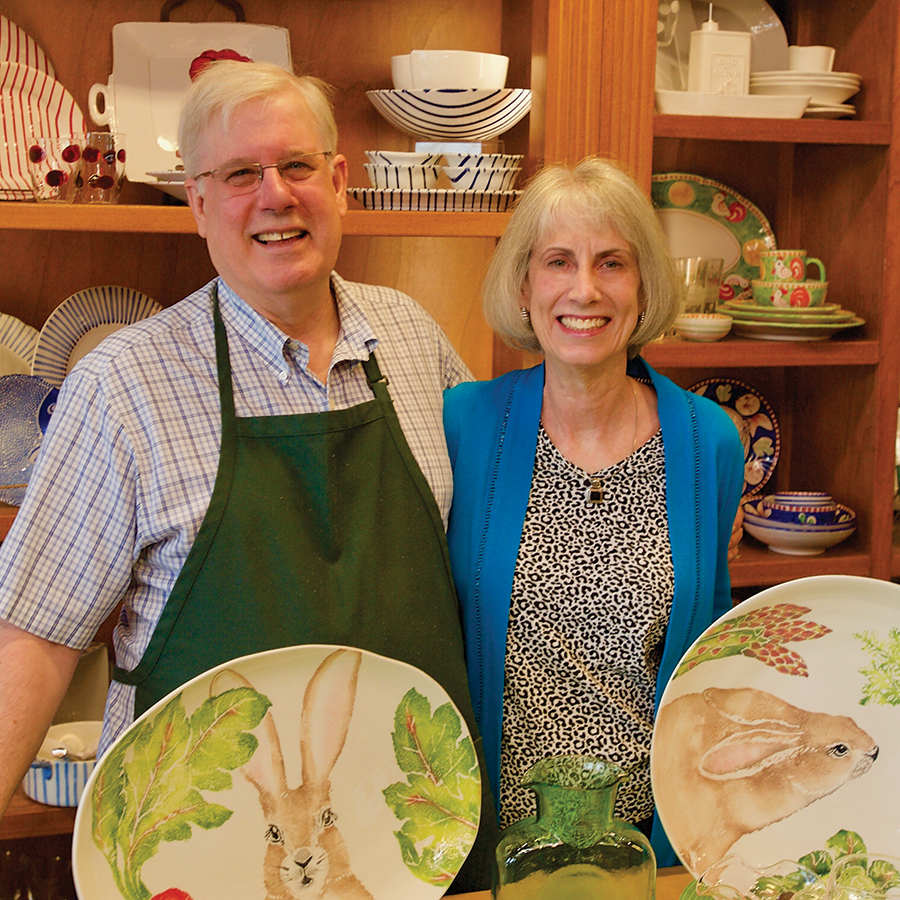
They’re also the only homegrown kitchen store in town.
Gone are Cook’s Corner and its later iteration, Roosters. Rest in peace, Tobacco USA. The Extra Ingredient is the only local player left on the bricks-and-mortar field with chains Williams Sonoma and Sur La Table and a few department stores with “better” home sections.
Then there’s the elephant in every retail room: the internet.
“Is Amazon going to own the entire world?” Art asks earnestly. “These things are out of our control, but we are trying to adapt. We have totally reinvented ourselves.”
The Nadings wrote the original recipe in the early 1980s. Art had just earned an M.B.A. at Wake Forest University, and he had planted a foot on the first rung of the corporate ladder at Western Electric in Greensboro.
He spent his days formulating business plans.
“I was bored,” he says. “It wasn’t very creative and everybody around me was saying, ‘I can’t wait to retire.’ It was all about what they were going to do, not what they were doing now. It was very sad.”
His bride, Martha, a UNCG alumna and a native of Winston-Salem like Art, applied her fashion merchandizing smarts at upscale women’s stores — Images in Clemmons and Montaldo’s in Greensboro, both locally owned.
An idea stirred in the young couple’s minds: What if they opened their own kitchenware store?
They loved to cook and entertain, and they relished the swell of nouvelle American cuisine or “something besides a steak,” as Art puts it. Martha Stewart’s first book, Entertaining, was published in 1982, and the Nadings ate up the do-it-yourself ethos.
At home, they served homemade bread, shrimp scampi and cannoli to their supper club friends. Heck, they even had a pasta maker, which put them in the culinary elite at the time.
Using his analytical skills, Art wrote a business plan for himself and Martha. They studied magazines about food and franchising, and they scouted the few gourmet stores that existed in the area. Winston-Salem had The Stocked Pot. Greensboro had Cook’s Corner.
Charlotte had zip. The Nadings considered launching their business there, but an opportunity appeared closer to home. A space now occupied by Athleta became vacant in Friendly Center.
Art’s father, Henry, a real estate agent who had managed Thruway Shopping Center in Winston-Salem, urged the couple to grab the chance.
“He felt Friendly Center was the best location in North Carolina,” Art says.
With financial backing from their parents — plus the young couple’s savings and a bank loan — Art and Martha opened The Extra Ingredient in 1985.
Martha came up with the store’s name while sitting — where else? — at the kitchen table. Art pounced on it because the name suggested more than cooking utensils.
‘’To me, it opened up the doors for us to be more,” he says. “It put us in the category we had to be in.”
Looking back, Art describes those early years as a relatively easy time for an energetic pair of young folks to open a store.
“People weren’t as sophisticated as they are now, “ he observes. “There was lots of room for error. It was a beautiful time to be who you wanted to be.”
Shoppers back then would have found essentially the same things they find in the store today: soothing music, helpful staff, high-end pots, pans and prep tools, serving dishes and utensils, tabletop and glassware, gadgets, linens and something exotic for the time — fresh, whole-bean coffee.
The perky smell filled the store, and the Nadings kept a pot of hot java, with tasting cups, on standby for customers. Martha made it her mission to educate people about the nature of good coffee. To wit, it’s a perishable food meant to be consumed while fresh.
“In the grocery stores, it should be with the oranges and apples,” she says.
The Joe was a hit from day one.
Then, now and always, roasted coffee beans have been the store’s top seller.
The rest of sales depended on customer tastes. For a long time, the Nadings had a secret weapon in sussing out the trends: Joel McLendon.
McLendon, a rep for various kitchen supply lines, was in his mid-70s when the Nadings were just getting off the ground. He had started out by selling toasters for Sears at age 18.
“He nurtured us along,” Martha remembers. “He had this great positivity, continuously.”
“I miss him so much,” says Art.
McLendon died in Dallas, Texas, at age 99, in 2012.
By then, the Nadings were experienced riders on the retail roller coaster. They’d opened and closed a store in Myrtle Beach and moved to a new slot, their current location, in Friendly Center. They’d watched sales climb on the strength of the nesting boom and the proliferation of TV cooking shows — then nose dive in the Great Recession of 2008, when sales flopped like a soufflé on standby.
A decade later, the Nadings and their dedicated staff of part-timers are still climbing back in a retail landscape altered by another major force: the roaring machine of the internet. Their strategy? Embrace it, figure it out, use it.
“You have to have Facebook. You have to have Instagram. You have to have a website,” says Martha.
“You can’t move back in time,” adds Art. “You have to move forward. It’s growing all the time, the multichannel, multimedia approach.”
Three years ago, they started selling their wares — including whole-bean coffee — from a comprehensive website. Online sales have grown steadily as customers have figured out that, item for item, the store’s prices are competitive.
“Everybody’s becoming educated to the fact that Amazon has the same prices as everybody else,” Martha notes. “Sometimes, we’re cheaper.”
The store also competes well with other bricks-and-mortar operations, says Art.
Foot traffic, while slimmer than pre-2008 levels, is steady at The Extra Ingredient, the Nadings say. They have loyal customers who are addicted to the coffee and social interaction, while others are brought in by an increasingly diverse stock.
In recent years, the store has added more packaged food — sauces, jellies, cookies, candy and such. Frames, candles, mugs and decorative umbrellas lend a gift-shop feeling. The snarky dish towels are a hit. So are trendy pieces like the Supoon, a goose-necked silicone spoon and scraper, and novelty items like the “Li’l Wieners” erasers packaged in a can like Vienna sausages.
Every Saturday, the store hosts an event for customers, whether it’s a demonstration of cobbler-making or a tasting of local honey.
“We are constantly looking for ways to make it more exciting,” says Art. “We often say we’re in the entertainment business.”
“People want to be dazzled,” adds Martha.
In some ways, the Nadings’ customers have changed over the years. No longer is the kitchen the province of women only. More men shop for kitchenware, alone or with their mates. The Nadings and their suppliers try to cultivate culinary families; couples who register for wedding gifts at the store receive a free Vietri dish that says “Amore.”
The Nadings also target shoppers who want healthy and environmentally friendly choices. The store carries reusable silicone straws — a replacement for disposable plastic ones — cast iron cookware, which is growing in popularity with young people.
Often, people come in looking for an item they remember their mothers or grandmothers using in the kitchen. Longtime saleswoman Kelly Albright remembers a man who didn’t know the name of the tool he wanted, so she did what she usually does with stumped customers.
“You just start showing them things, and eventually you figure it out,” she says.
He wanted a pastry cutter.
Another challenge: kitchen vocabulary is often regional.
“ ‘Spatula’ has many different meanings,” Albright says laughing, adding that it can be used to describe a flipper, a bowl scraper or a flat metal blade.
Saleswoman Karen Dolan notices that many customers like to talk about what they’re cooking, and they ask for advice.
“When they come in for a springform pan for a cheesecake, they want to know how you do it,” she says.
For this reason, the Nadings hire salespeople who know their way around the kitchen and provide them with hands-on training, often by vendors, so they can explain how to use products.
“When you say, ‘I’ve used that,’ it makes a big difference to people,” says Dolan.
Shoppers appreciate the store’s community roots, too, says salesman David Hagaman.
“I think customers are aware that we are local and will specifically shop with us because of that,” he says.
The Nadings, in turn, lean local in their business dealings because they want their spending nourish the area.
“We live here,” Art says.
“It’s our community,” says Martha.
They buy coffee beans from four roasters, two of them local: Fortuna Enterprises and Piedmont Roasting Company. They also support local causes and programs such as Greensboro Urban Ministry; the Edible Schoolyard at the Greensboro Children’s Museum; The Arc of Greensboro, which provides services to people with development disabilities; and Alight Foundation, which supports local breast cancer patients and their families.
Though they’re stalking traditional retirement age — he’s 63, she’s 64 — the Nadings have no plans to turn off the lights any time soon. With their two sons grown and living elsewhere — one in Houston, Texas, and one in Telluride, Colorado — and their own parents now deceased, the couple are happy to have the store to occupy their hearts and minds.
“We are very blessed,” says Martha.
“We are in fairly decent health,” says Art. “For me, the stimulation is a way to stay healthy.”
The challenge of running a small business in the Age of Big keeps them as sharp as the premium carbon steel knives they sell.
“You can’t just be local,” says Art. “You gotta be good.” OH
Maria Johnson is a contributing editor of O.Henry
Doodad
Shain! Come Back!
International Blues Challenge winner Jon Shain returns to the Piedmont
Jon Shain is a fighter.
For his latest bout in January, he knocked out more than 260 opponents to take the title for the International Blues Challenge’s Best Solo/Duo challenge in Memphis, Tennessee. Shain has been in training for decades, a fixture on the Triangle blues/folk circuit since he was a history major at Duke. He honed his Piedmont Blues guitar skills playing with Big Boy Henry and John Dee Holeman after joining Music Maker Relief Foundation’s Slewfoot Blues Band. Following graduation in 1989, Shain and John Whitehead formed Flyin’ Mice, ostensibly a blues/rock duo that specialized in line-blurring.
“We always had kind of a fingerstyle blues approach in Flyin’ Mice even after we got a drummer,” the musician says. “Then we mixed in bluegrass and country elements, and my own material has always kinda bordered on blues.” The blurred lines sometimes confound people, as Shain quips: “In folk circles they all think of me as a blues player.” How is he regarded by fans of the blues? “In blues circles I’m definitely kinda folksy.”
The Mice were an eclectic bunch that Shain says “didn’t let any genre keep us from trying something.” Started as a blues duo in ’89, the band expanded in membership and genre, covering Bill Monroe and Ralph Stanley when the guitarist got a banjo. WAKE, a four-piece active from’96–’98, had a country-rock flavor, a folkier version of the Flyin’ Mice.
Incidentally, Shain initially entered the IBC 10 years ago as a duo with F.J. Ventre, getting to the finals before getting knocked out. “Maybe the difference in 10 years was my ability to connect with the audience more,” Shain says of his win, which got him a slot at this month’s Carolina Blues Festival, as well as a booking in the Las Vegas Big Blues Bender in September and a spot on the West Coast/Mexican Riviera Rhythm & Blues Cruise, with artists including Los Lobos onboard.
“We just go where we want,” Shain says of his output, including his latest, Tomorrow Will Be Yesterday Soon, partnering with Ventre. “The album I did before that was a solo fingerstyle blues album tribute to W.C. Handy, ragtime and blues picking with nothing but guitar and vocal,” adding that it was a chance to get his guitar ya-yas out. “Now that we have this blues challenge winner on my mantle too, the next album we do is gonna try to return to blues a little bit more.” — Grant Britt OH
John Shain will appear at Carolina Blues Festival, held May 18 & 19 at LeBauer Park, and Grove Winery on May 26. Info: carolinabluesfestival.com; grovewinery.com.
O. Henry Ending
Stitches in Time
A mother’s miracles with needle and thread
By Kate Goodrich
When I was very small, my mother worked small miracles in cloth and wool. Tiny clothes, too small for me, she fashioned for my doll. The very sweetest, my favorite by far, was a pale yellow sweater, with each of its little pearly buttons in the shape of a bunny. These treasures just appeared: I never saw the knitting and purling, the cutting and stitching, the post-bedtime hours and all the love that went into creations such as that lump of yellow wool no bigger than her hand.
Much later, I tried my own hand at knitting under her guidance. But my “scarf” came to a desultory halt at 6 inches in length, the needles jammed into immobility by the intensity of my efforts. I never took up needles again but marveled as off the ends of hers spun such intricate patterns as the curved heel of an argyle sock.
No project was too small — or too large — for this seamstress extraordinaire. She did not hesitate to tackle reupholstering a couch or fashioning a set of lined floor-to-ceiling drapes for our dining room. To most every piece of clothing she made for us, she set her unique signature — a creative trim or appliqué or fringe plucked out by deft hands.
But there is one creation of hers, indelible in my memory, that also carries a great burden of guilt. On a Saturday expedition to an old fabric emporium in a run-down section of Philadelphia — where normally we would never have ventured without my father — my mother patiently endured my rejection of one bolt of cloth after another as she roamed the store’s dusty, claustrophobic aisles hoping that her next suggestion would prove to be The One. The ivory brocade we finally selected was so lovely that I almost wished I were getting married instead of merely singing in the high school chorale affair.
Having resurrected five yards of the stuff from its dusty sepulchre, my mother proceeded to construct a wonder that Cinderella’s fairy godmother would have envied: The shimmering ivory brocade was slowly transformed into a floor-length sleeveless gown with a wide, rose-colored moiré sash. My pleasure and anticipation grew each time I stood for another fitting and stroked the gown’s folds, feeling like that glass-shod princess. And like the fairytale heroine, I wore my lovely dress only once. It grieves me to say that a case of nerves during the evening’s big performance caused me to sweat profusely. The dress was stained beyond repair.
I didn’t know then that, over a lifetime, “favorite” clothes flow in and out of a woman’s closet like money in the bank: I figured this would be my favorite dress forever. I thought only with guilt and deep regret of the dozens of hours and zillions of stitches my mother had invested to make — what? Make a dress? Not really.
Like the new drapes and the transformed couch — and the yellow sweater with bunny buttons — the dress, as an object of beauty, was ephemeral. But as an act of love, it is permanent. For my mother’s only desire was to make her eldest daughter happy and, for one special evening at least, to feel very beautiful and grown up.
So, thanks Mom. I haven’t forgotten. Never will. OH
After living and working in Boston for more than 40 years, Kate Goodrich retired to Wilmington in 2013 to be near the beach, where she can be found most seasons in a chair engrossed in a good book.
May 2019 Almanac
By Ash Alder
The soft thud of a magnolia blossom crashing down upon the tender earth takes me back . . .
Rope hammock swing.
Soft light filtering through smooth green leaves.
Love notes tied with twine to sweeping branches.
We both knew it would not last. And yet we had our glorious season.
Life is like that. Fleeting as a fragrant white flower. And as May blossoms burst forth in jubilant splendor, we cherish the transient, intoxicating beauty of spring, and relearn the sacred dance of loving and letting go.
May is the beginning and the end.
On the bookshelf, Aldo Leopold’s A Sand County Almanac hasn’t been opened since the crash-landing of yet another bygone romance that died on Easter weekend, years ago now.
January, February, March, April.
Four cozy months of essays read aloud in bed, yet if we took any morsel of wisdom from Leopold’s poetic reflections of the natural world, it was this: Life is an endless dance of change.
This morning, I take the book to the front porch, turning to the dog-eared page of May — a fresh new chapter.
As a black-capped chickadee draws quick sips from the nearby birdbath, I read about the return of the upland plover, what Leopold refers to as the “final proof of spring” in rural Wisconsin.
Here, the final proof of spring is gone. We have landed on the fresh new chapter of May, a glorious season of its own.
Children are the anchors that hold a mother to life. — Sophocles

Cinco de Mayo
Mark your calendar. The Eta Aquarid Shower peaks just before dawn on Sunday, May 5. You could witness 10—40 meteors per hour. Not exactly the return of Halley’s comet, but it’s a chance to catch a glimpse of the famous comet’s debris. Find yourself a soft spot on the lawn. Breathe in the aroma of Southern magnolia. Enjoy the show.
The Mother’s Moon
The Full Flower Moon rises on Saturday, May 18. Also called Mother’s Moon, Milk Moon and Corn Planting Moon, this month’s moon illuminates red fox pups, fluffy cygnets, and wildflowers everywhere.
Speaking of lunar magic, The Old Farmer’s Almanac looks at the positions and phases of the moon to determine the “best days” for various activities. This month, the best days for planting aboveground crops are May 8 and 9 (plan now for July sweet corn on the grill). Plant belowground crops May 26.
Cut hay May 1–3.
Prune May 10–11 to encourage new growth.
Can, pickle, or make sauerkraut on May 26.
’Tis like the birthday of the world,
When earth was born in bloom;
The light is made of many dyes,
The air is all perfume;
There’s crimson buds, and white and blue,
The very rainbow showers
Have turned to blossoms where they fell,
And sown the earth with flowers.
— Thomas Hood

Gifts for Mama
Mother’s Day falls on Sunday, May 12. I think of my fourth-grade teacher, who asked us to bring in one of our mother’s high heels. Yes, just one. We spray-painted it gold, lined the inside with floral foam, and proudly stuck a dozen plastic flowers inside. Happy Mother’s Day to all. May you walk in beauty.
Here are a few seeds of inspiration for the beloved mother figure in your life:
• Daylily bulbs
• Mexican tarragon for the herb garden
• Azaleas
• Ornamental pepper
• Wax begonia
• A new pair of shiny gold shoes
Friendly Times
Tales from our most beloved shopping center
By Billy Ingram
My mother told me a story once about how she and a childhood friend rode their bikes into the woods west of her family’s home on West Greenway in Sunset Hills. This was back in the 1930s when Sunset Hills still had woods. She and her friend managed to get hopelessly lost in that forest before finally coming across a single cabin where a nice old hermit directed them back to civilization. That patch of woods, located well outside city limits, was to one day become the site of Friendly Center.
Friendly Shopping Center was a major part of my young life in the 1960s and ’70s — the lollipop tree at Ellis-Stone excited me as a toddler. In later years I was buying film and having pictures developed at Carolina Camera, along with shopping for art supplies and books from Wills. How well I remember inhaling those fluffy Sweet Shop cupcakes, playing endless Captain Fantastic pinball games at Brunswick Lanes and wolfing down Woolworth’s banana splits, where customers popped a balloon to determine its cost, as little as a penny (I was never so lucky — full price every time).

My Aunt Gertrude would only grocery shop at the Friendly Winn-Dixie — they were “The Beef People” after all. Our finer clothing came from Bernard Shepherd, where you’d merely sign a receipt. Your credit-worthiness was assumed, a bill would arrive in the mail. A trip to Friendly Center was de rigueur during the holidays, if only to drive past the mechanical waving Santa and sample free snacks at Hickory Farms, a permanent fixture in those days.
There was a hometown feeling to Friendly Shopping Center. With its open-air plan and proximity to postwar neighborhoods such as Starmount and Guilford Hills, it became a town square for what counted as the suburbs in those days. Moms could mail letters, meet friends for lunch, check out the latest fashions, and do the grocery shopping all in one stop. Dads could pick up dry-cleaned suits and starched shirts at Blue Bird Cleaners (conveniently located next to the ABC store). Kids could walk or ride their bikes to browse the trains and model kits at the toy store — or in the case of one 12-year-old, would-be golf writer and O.Henry editor, try to purchase a Playboy magazine at Eckerd Drug.
Contributing to the village-y vibe was the fact that the majority of the stores were locally owned. Fleet-Plummer before it relocated was your typical hardware concern but they had a big toy selection around the holidays. One Christmas, as Santa was laying out our presents, it was discovered that my sister’s Chatty Cathy doll didn’t possess the gift of gab, so Dad got Mr. Plummer out of bed to meet him at the store and replace it for one that talked.
Friendly Center was a lot smaller when I was a young man, compared to today, but considerably larger than its first incarnation.
While there were established shopping centers in Greensboro by the mid-1950s, most notably Summit, Lawndale and Plaza, none were nearly so ambitious, or what we would call today “upscale,” as Friendly Shopping Center. “Piedmont Carolina’s first and only complete regional shopping center” was designed for “casual shopping,” open Monday through Saturday.
When Friendly Center debuted in 1957, it consisted of two blocks with 12 shops each:
BLOCK A: Guilford National Bank, Pleasants Hardware, Leon’s Beauty Salon, Harllee’s, Inc, Friendly Toy & Hobby Shop, Stanley’s, Inc., Junior Circle Shop, Guy Hill, Carolina Camera Center, Wills Book & Stationery, Laurie’s Sportswear, Venus Slenderizing Salon.
BLOCK B: Mason’s Florist, Jay’s Delicatessen, Harold’s, Eckerd Drug Store, Clippard Barber Shop, Blue Bird Cleaners, F. W. Woolworth Co., Belk, Kirby’s Shoe Store, Guilford Dairy Bar, Colonial Stores, Kyle’s Friendly Service.
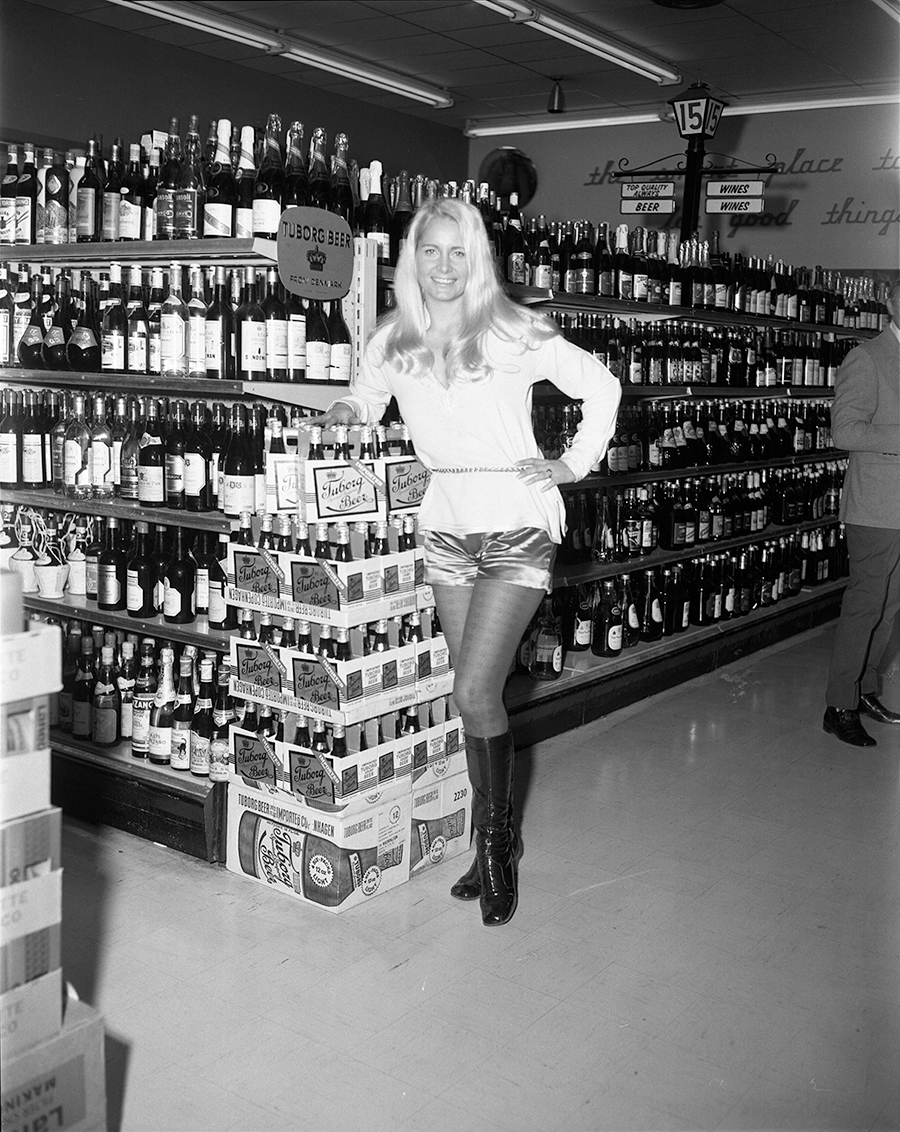
On August 1, 1957, Blanche Sternberger Benjamin, wife of Starmount cofounder Edward Benjamin, cut the ribbon to open Friendly Shopping Center to the public. Within an hour, all 1,300 parking spaces were overflowing; 25,000 shoppers flooded through the doors on that one day, representing one out of four Greensboro residents.
Behind Pleasants Hardware, previously in business for 48 years at 519 S. Elm, Mom could drop off the little ones then browse the aisles in peace while they frolicked in the children’s playground. The main attraction, stretched over a concrete pit, was a mammoth trampoline that youngsters could bounce around on for 25 cents an hour, unsupervised.
Laurie’s was the first local fashion boutique to leave downtown and head west. In business for 13 years before relocating, William and Athena Simon’s store was named for their daughter. Our first Eckerd Drug Store was at Friendly. Wills Book Store had been selling novels and paperbacks for 52 years on Elm, and this was their second location, with as much space devoted to stationery, art supplies and gifts — paperweights, bookmarks, china figurines of Beatrix Potter characters — as books.
At 24,000 square feet, Belk was the most opulent store in the center. Shoppers were greeted by a 12-foot high, 70-foot long mural facing the mezzanine floor depicting the administration building at Woman’s College (UNCG), First Presbyterian Church, and the statute of General Greene at Battleground Park.
This was Belk’s 354th store but considered important enough that John M. Belk, chairman and CEO of the company, along with his top executives, were in attendance for day one. “I worked stocking Belk before they opened in 1957,” Phil Callicutt remarked. “I became famous for not allowing Mr. John Belk in the front door. I told him to ‘Go around to the back door like the rest of the salesmen.’ I was lucky that my career with the company wasn’t hampered.” As a convenience, credit accounts could be carried over from the Belk store downtown.
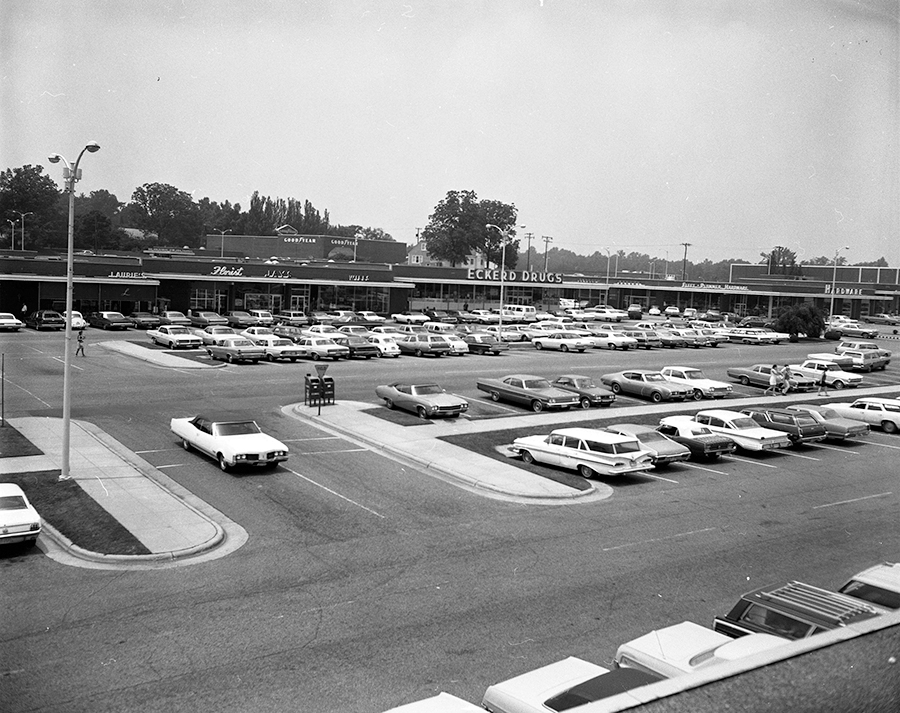
Another elaborate mural, this one of crushed glass, could be found at Harold’s Restaurant. Restaurateur J. Harold Coble boasted his dining room was the most modern in town, interior designed by Ray Teague, a member International Art Association. Diners enjoyed a cosmopolitan ambiance of Philippine Mahogany, brass and crystal chandeliers, 20 contemporary art installations, 30-foot planters shielding the kitchen, and two romantic alcoves papered in Japanese grasscloth, while supping on European cuisine and flaming desserts that the maître d’hôtel adapted from Manhattan’s Roosevelt Hotel.
A considerably more downscale ambiance that included the combined aromas of plastic flowers, grease from the lunch counter and cedar shavings that lined hamster cages greeted shoppers at Friendly’s Woolworth’s. Unlike the downtown branch, it was considered a self-service operation, where you could find cheap toys, sundries, clothespins bandanas, goldfish, comic books and an abundance of poster boards used in many a school project. There won’t be any salesgirls,” the store manager bragged. “Just checkout gals.”
Flush with success, Friendly Center underwent its first expansion in 1959, adding six new units that included Ellis-Stone (which became Thalhimers), a post office, bakery, and the ABC store.
Boy Scouts in the ’60s would regularly encamp on the western edge of the shopping center; one winter morning campers woke up to several inches of unexpected snow atop their tents. Scouts purchased their official gear in Belk, their shoes at Kirby’s. Blissfully unaware of the dangers of radiation, Kirby’s Shoe Store had a fluoroscope under which children could view their feet, allowing them see right through to the bones.
Friendly Center still had room to grow, and grow it did in 1967, a push to the north that added iconic stores like Bernard Shepherd Clothing, Gate City Pharmacy, Friendly Car Wash, Cass Jewelers, Thomas Photo Supply, Harvey West Music Company, Paul Rose Department Store, K&W Cafeteria, Rosenthal’s Bootery, Bocock-Stroud Sporting Goods, Merle Norman Cosmetics, and that eclectic emporium everyone fondly remembers, Potpourri.
Besides the ubiquitous scent of patchouli, Potpourri was known for bizarro merchandise like melted soda bottles repurposed for vases, an endless array of incense, love beads, blacklight posters, pet rocks, mood rings, kitschy tchotchkes galore, in addition to the dozen jars of stick candies positioned at the register, where every purchase was placed in a glossy paper bag topped with the store’s icon, a yellow sun with bright orange rays. At one of their many sidewalk sales, I bought a 2-foot high inflatable plastic Coke bottle that hung from the ceiling of my bedroom.
Potpourri was founded by David Grimes, by all accounts beloved by those who worked for him. Grimes sold a lot of fondue kits, which became all the rage in 1967, before discovering there were no fondue cookbooks. He commissioned his own, and Potpourri Press was born. Production offices were set up behind Krispy Kreme on Mill Street where the outfit published dozens, maybe hundreds, of hippy-dippy booklets with titles like Gardening with Ferns, Lovers Dining and Napkin Folding.
In 1967, Gate City Pharmacy, like Scott Seed two years earlier, closed their downtown digs to relocate to Friendly. The drugstore is still there, but sadly, the customer-friendly garden store, smelling of potting soil and fertilizer, is not.
The center’s 1967 expansion was preceded by the state-of-the-art Terrace Theatre, opening on Christmas Day 1966 showing Walt Disney’s Follow the Boys in Ultra-Vision, on a wall-to-wall screen with 6-track stereophonic surround sound. Another groovy component at the Terrace was the plush rocking chair seating.
My cousin Billy Owens worked at the Terrace Theatre. “It was in 1970, right before I got out of ninth grade,” Billy tells me. “I was making 85 cents an hour. Now, that was just an usher job, if you were head usher, $1.15.” Membership had its privileges: Employees of the Terrace could show their pay stubs to get free admission at the Janus Theatres, the city’s first multiplex just beyond the Plaza Shopping Center at Battleground and Northwood, and the Carolina downtown.
Billy says he almost died at the Terrace — twice. “We would do kiddie matinees on Saturday morning,” he recalls. “We had an old PA system with those old metal microphones so we didn’t have much of a way to get music through it.” These events were hosted by WFMY’s George Perry (The Old Rebel). “We had this old turntable with a metal arm,” Billy says. “So I turned it on and grabbed both of those metal things at once and it zapped me and knocked me down.” When he came to, “There was The Old Rebel’s face above mine saying, ‘You OK?’ I went, ‘Yeah.’ And then I did it again!”
The next movie attraction would show up on a Sunday morning. “Big canisters that were set right out front and nobody would steal them,” Billy says. “They would book the films for a month and then, two weeks in, they’d say, ‘Held over for a third week’ then ‘Held over for a fourth week.’” A second auditorium was added on in 1974.
When asked what his favorite place at Friendly was back in the day, Cousin Billy doesn’t hesitate. “I loved Jay’s Deli, that was a lot of fun, they had great food.” He was especially fond of the Lolly Burger, “I asked them, ‘What’s in the Lolly Burger?’ They said, “Everything that’s left over.’” Jay’s would actually take cold cuts, grind them up, make patties, then fry them like a hamburger.
Besides Belk, Jay’s Deli is the only original Friendly establishment still present. But in name only, having changed ownership and menu decades ago. “Jay’s Deli was started by Sol Jacobs, who was my uncle, and Morry Jacobs, my dad,” Rick Jacobs tells me. “It was a deli and a gourmet foods store also with everything from escargot to fine cookies and meats and cheeses to go.” Rick worked there in 1970, “You had to be 18 to work in a place that served alcohol, so whenever my cousins turned 18 they went to work for Jay’s.”
Most of the sandwiches at Jay’s were named after other shops at Friendly, for instance the Mason (Mason’s Florist) was rare roast beef, slaw and Russian dressing. “The lunch rush was monumental, it was pandemonium, controlled chaos,” Rick remembers. “There was a lady named Gertrude who worked there for years and she kept it going. After the lunch rush, my first day working there, I saw Sol make himself a sandwich and get a cold beer out of the cooler and sit down. He looked up to me and said, ‘When you turn 60, you’re entitled to a beer break.’”
Jay’s most popular creation was the Atomic Submarine Sandwich, keeping a stack of them prewrapped by the register. “The customers were a big cross section, the best selling beer by far was Blatz,” Rick recalls. “One time I got upset with a lady and I mouthed off to her a little and she went to complain to Sol. He told me to go into the kitchen and stay there and I thought he was going to come in there and rip me a new one but he smiled and said, ‘This is why I own my own business, so I can do what you just did.’”
Described as a ‘radical guy,’ Sol Jacobs was very politically active, running for mayor twice against Jim Melvin in the 1970s. “All the stores leased space from Mr. Benjamin,” Rick remembers. Part of the lease agreement stated that, once a year or so, Edward Benjamin could dictate to business owners what he wanted to see displayed in their storefront window. “He wanted to do a promotion for U.S. Savings Bonds at Jay’s one month,” Rick says. “Mr. Benjamin came in with a big Savings Bond with American flags and had it all dressed up but Sol was dead set against the Vietnam War from day one and so was my father. Sol did everything Benjamin required him do but in the corner of that window he added his own sign that said something to the effect of, ‘Any money invested in Savings Bonds should be designated for troop withdrawal only.’”
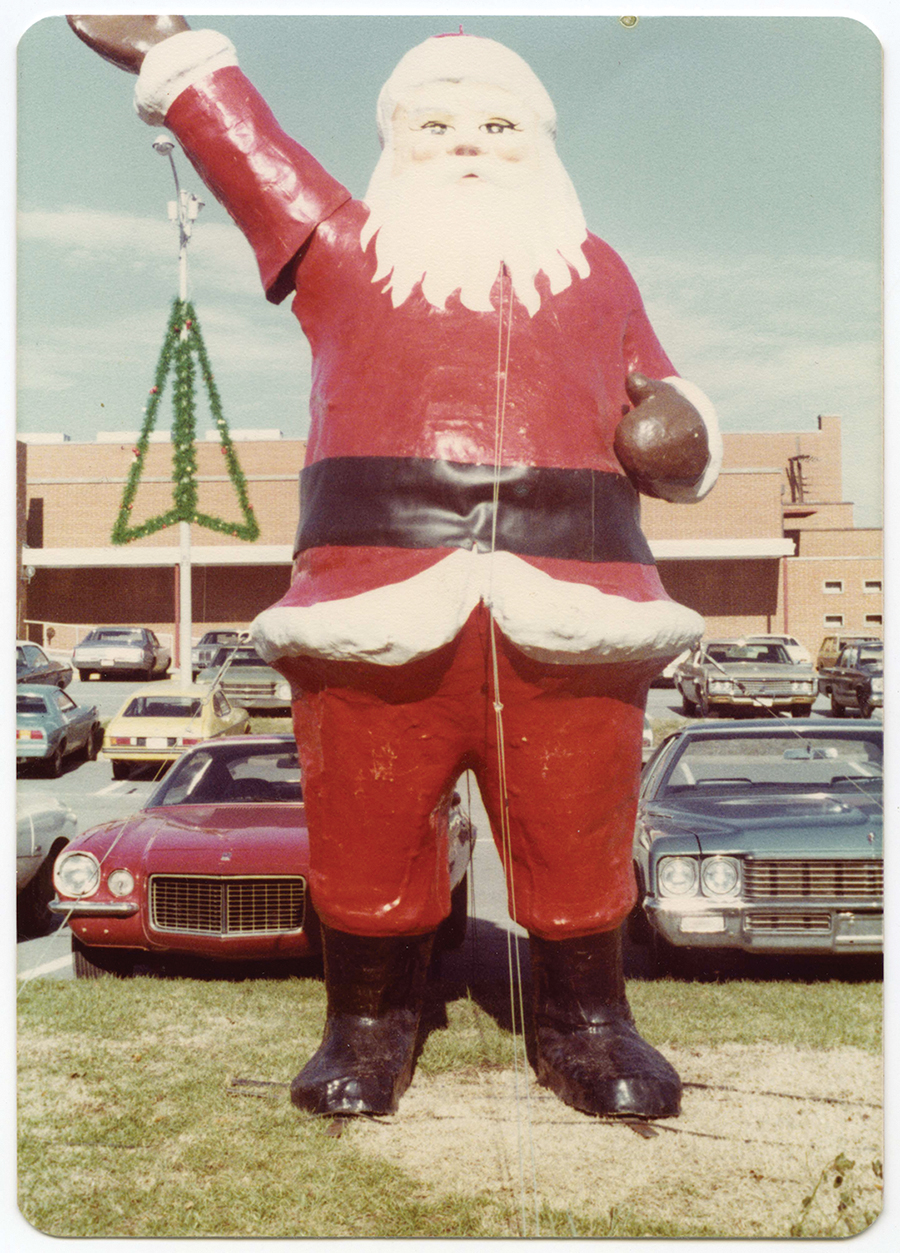
In 1969, Potpourri was joined on that block by two additional shops owned by David Grimes, Greetings Galore and Reed Runners. “I loved working for Dave Grimes,” says Teresa Moore, an employee of Reed Runners for eight years beginning in 1970. “He was like an older hipster. David came back from California with the idea for the shops.”
Reed Runners carried rattan furniture, candles, woven baskets, everything to make your apartment look like Mary Tyler Moore’s. “We had those hanging basket chairs, we sold a lot of those, also hammocks and wicker furniture,” Teresa notes. “There was nothing in the store that anybody needed but it was stuff you couldn’t find anywhere else.”
Teresa has fond memories of those days, “David Grimes was an awesome employer, he cared about his people. I think we made a little bit more than other people in terms of wages so everybody that worked there stayed for a long time because we enjoyed it.” On Saturdays David provided lunch in Potpourri’s back room for all his employees. The only unpleasant aspect according to Teresa, “We had a talking myna bird that could say ‘Hello,’ ‘How are you?,’ and ‘What’s up?’ Cleaning the cage every morning came with the job.”
Behind that row of shops was The Trophy Room tavern (where Newk’s is today), notorious for bartenders allowing underage drinking, despite the legal drinking age being 18. Decked out in manly-man décor, its walls lined with sporting awards, and an enormous aquarium separating the hunting- and fishing-themed sides, the place attracted the likes of Ron Muir, who played left wing for the city’s minor league hockey team, the Greensboro Generals. Within a few short years, The Trophy Room moved to Spring Garden near the UNCG campus where, at night, the watering hole became a disco.
By 1971, the center had grown to 65 stores, including Schiffman’s, opening a second store at Friendly. “No, there has never been a mention of closing our downtown location as it has always served as the headquarters for our organization,” Lane Schiffman informs me. “We believe both locations have been staples for us and the community since 1893 and we continue to see growth as Greensboro continues to thrive.” Situating the newer branch between Starmount and Irving Park made sense as Lane Schiffman points out: “Our father was looking to serve customers in their own backyards and had the foresight to see that Friendly Center was where Greensboro was moving. His ultimate aim was to make Schiffman’s more accessible to everyone.”
Friendly Center, coupled with the Four Seasons Mall, led to the demise of the center city as a prime retail destination, the only major player remaining after the 1970s was the original Schiffman’s.
In 1976, Friendly Center launched Forum VI, an upscale mall on the corner of Northline and Pembroke anchored on the first level by a larger K&W Cafeteria. My mom loved Forum VI, with two floors for shopping and fine dining that included Montaldo’s, Urban Artifacts, The Nicholas (later Robert’s) restaurant and Kabuto. The mall concept fizzled, empty parking spaces could usually be found right beside the front door. K&W survived however, one of the few places you can dine that looks the same as it did 40-plus years ago.
As the 1980s came to a close, Starmount announced plans to enclose Friendly Shopping Center, transforming it into an indoor mall to better compete with Four Seasons across town. For almost two years they proceeded with plans that envisioned leveling most of the stores in order to put shops where the parking was and parking where the shops were. Fortunately, they thought better of the idea. Instead, a $2 million makeover took place in 1992.
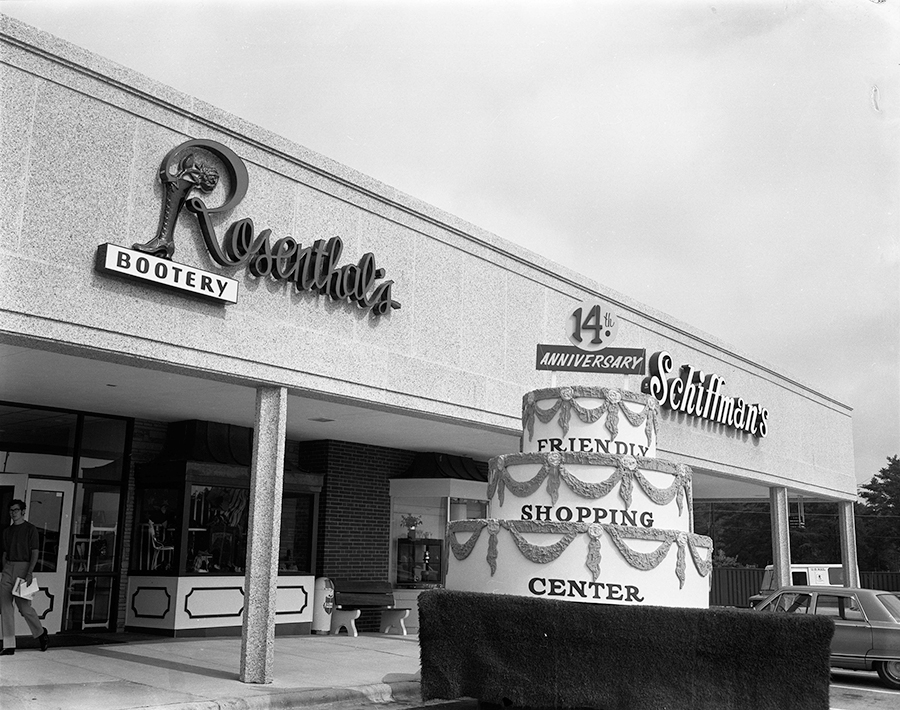
In 2006, a year after a new concept The Shops at Friendly was established, where the iconic pink glass-and-steel box housing Burlington Industries’ headquarters once stood, Starmount sold the entire complex for more than $200 million. That’s a lot of love beads and mood rings.
On December 6, 2016, I was one of about 100 people who attended the opening of a Time Capsule, buried 50 years earlier to the day alongside the Terrace Theatre. Unfortunately, the container had been breached, everything inside immersed in red clay mud. It wasn’t clear what exactly was inside.
A fitting metaphor, you may say. The past is, well, buried.
And one day, the hip and trendy national chain shops that seem so fashionable and of-the-minute will fade into memory like beloved institutions such as Potpourri and Carolina Camera. But, really, can you imagine heading west on Friendly Avenue and not seeing Santa waving at you? OH
Billy Ingram is currently writing a book about his career as a movie poster designer for the major Hollywood studios in the 1980s and ’90s.
Got any fond Friendly memories? Please feel free to share them at facebook.com/ohenrymagazine.
Birdwatch
Purple Reign
For birdwatchers, the return of the purple martin marks the true arrival of spring
By Susan Campbell
For many bird enthusiasts, it is not truly spring until purple martins return. Their unique and twangy song, high-flying acrobatics and glossy plumage easily distinguish them from the other members of the swallow family. But it is the species’ affinity for manmade housing that endears them to thousands of martin landlords across the United States. In fact, east of the Rocky Mountains, purple martins are completely dependent on gourds and multifamily housing to raise their annual broods. Nesting Martins love company and pairs may take up residence in close quarters with anywhere from a few other families to dozens of them during May and June. Established colonies have been known to include a hundred or more adults if space is available. In prime habitat, less experienced birds may delay breeding until a vacancy in the housing occurs.
Martins return to North Carolina from their wintering grounds in Brazil by late March. However, early individual scouts may be seen as early as late February. Experienced adults are paired for the season by early April. Both male and female share the nest building duties, producing a nest of pine needles and leaves. The female lays five to seven eggs and patiently sits on them for about two weeks. After hatching, the young are fed by both parents for up to a month before they are strong enough to leave the nest. They remain associated as a family group not only with each other but also their neighbors in the colony until late July when they begin their journey southward for the winter.
Purple martins are found where larger flying insects are plentiful during the warmer months. This is usually close to water given that their favorite prey includes dragonflies and damselflies, which tend to be abundant near ponds, lakes and rivers. For many years it was erroneously believed that martins were an ideal form of mosquito control. But recent research has shown that they do not pursue mosquitoes. This is almost certainly related to the mosquito’s small size. Maneuvering to catch such tiny prey has virtually no energetic benefit. Also peak foraging occurs around midday, not at dawn and dusk when mosquitoes are most active.
Attracting martins requires some forethought. The birds need lots of room to soar and maneuver adjacent to their home. It needs to be in an open location at least 30 feet from human housing and 60 feet from the nearest tall trees (the farther, the better!). The gourds or house should be 10–20 feet high and clear of any bushes, shrubs or vines. Open area around the pole and housing will reduce the likelihood of predation by mammals or climbing snakes. Once a few pairs of martins are successful breeding in a new location, they will not only become very site faithful but also attract other individuals. Indeed, countless people each year find that providing for purple martins and sharing in their summertime activities is the ultimate backyard birding pursuit. OH
Susan would love to receive your wildlife sightings and photos. She can be contacted by email at susan@ncaves.com.


